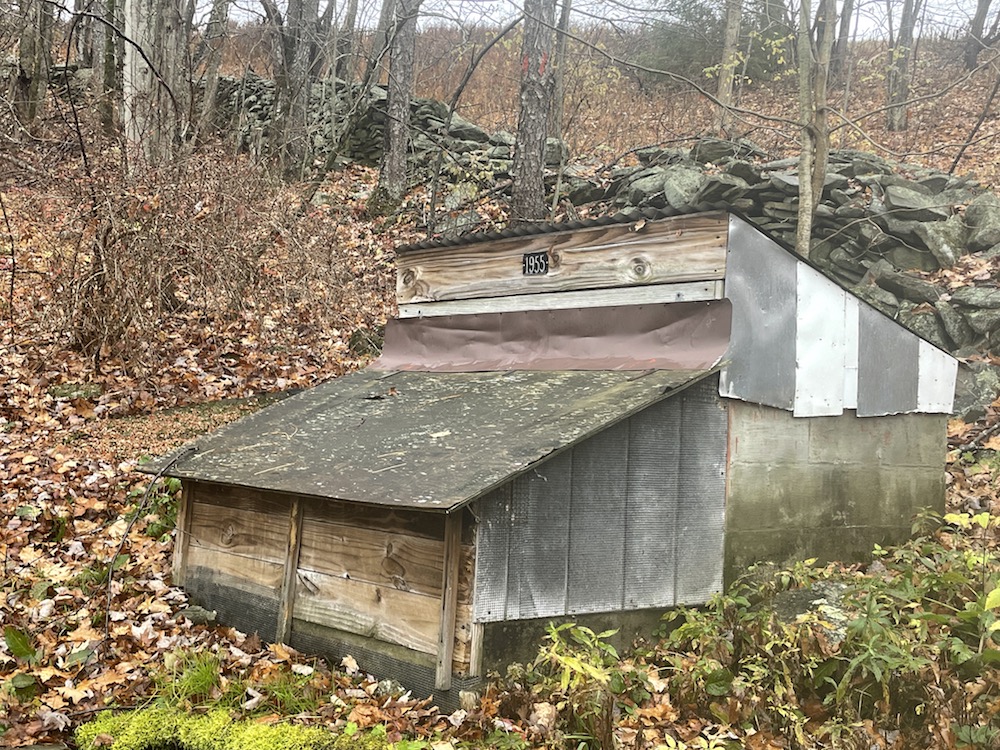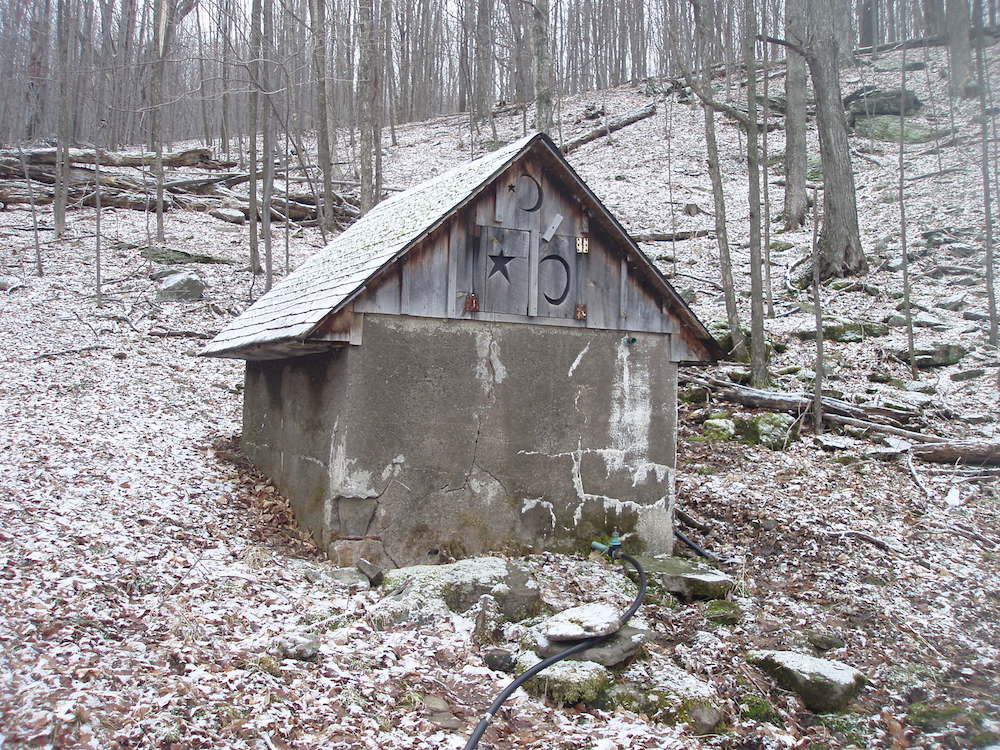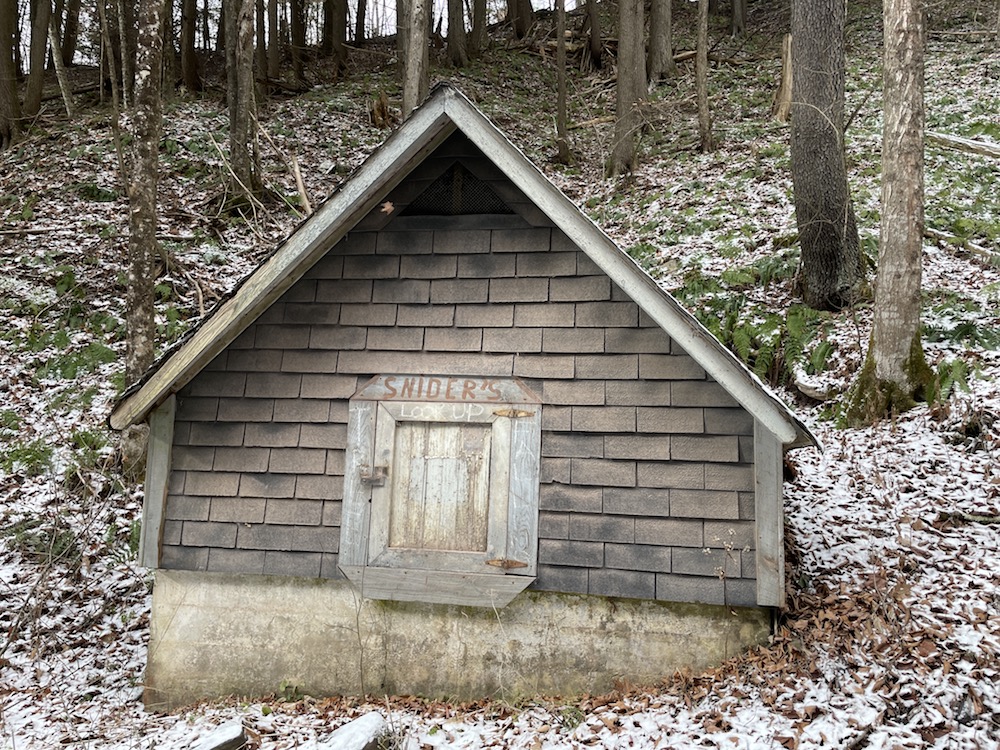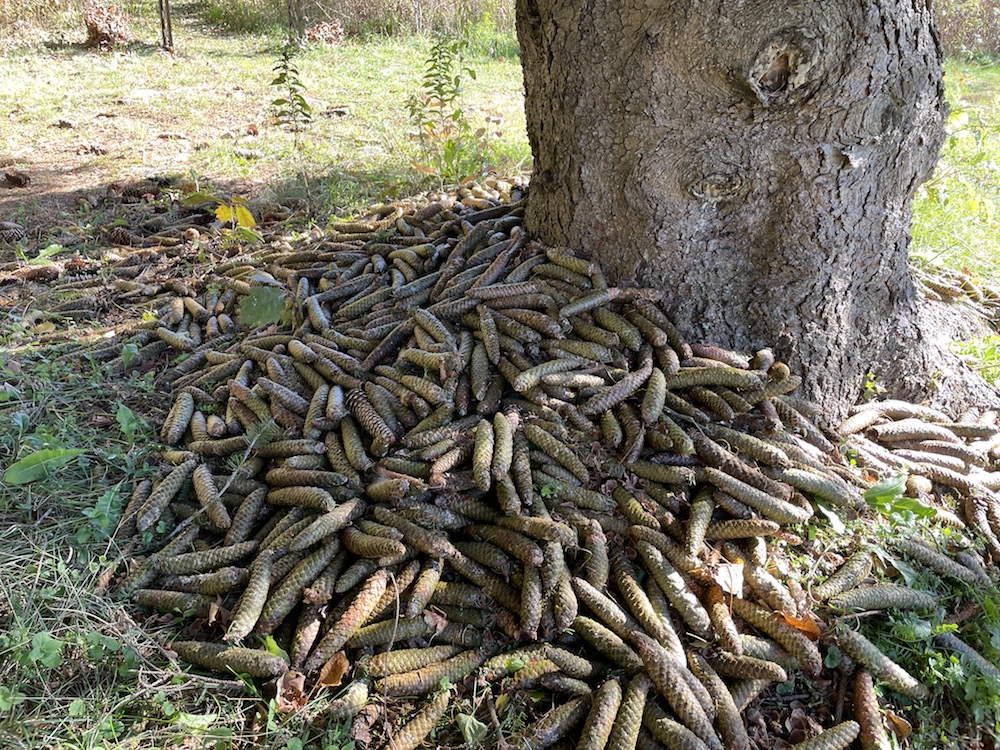Because the water comes from underground it stays at roughly 50 degrees Fahrenheit year-round. Before modern refrigeration, the presence of a good spring on one’s property was far more convenient and practical than the use of ice houses.
Ice had to be harvested from nearby water bodies, transported to the ice house, and then packed in an insulating material like sawdust. This could likely only be afforded by the wealthy. Other structures were likely located near springs for convenience.
A spring house circa 1955
A spring house with interesting carvings
A nice shingle spring house with interesting text
Once a reliable spring (or suitable stream) was found on a property, a small structure would be erected around it to capture the water (think of a mini-reservoir) and keep it relatively clean from leaves and animals. Sometimes food containers could be placed directly in the water. Other more elaborate spring houses might have ledges, shelves, and hooks. Occasionally, large spring houses were constructed with spare rooms and sleeping quarters for workers.
Later on, as dairy farms developed, they were utilized more for milk storage until the milk could be picked up for delivery. This continued until the mid-20th century, when modern refrigeration took over.
People had to be quite resourceful before electricity. Sinking your perishables in a stream while camping reminds you of that.








